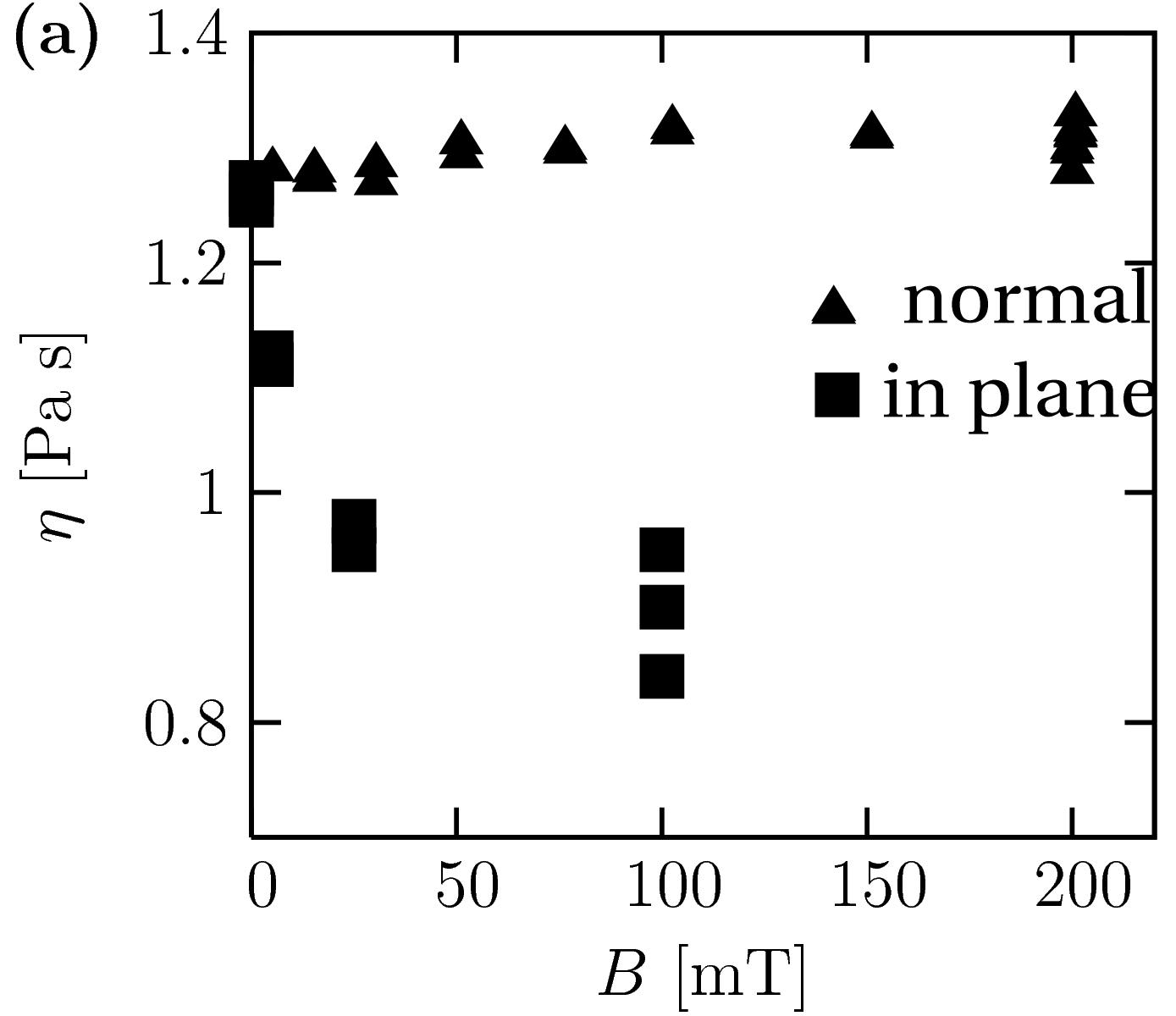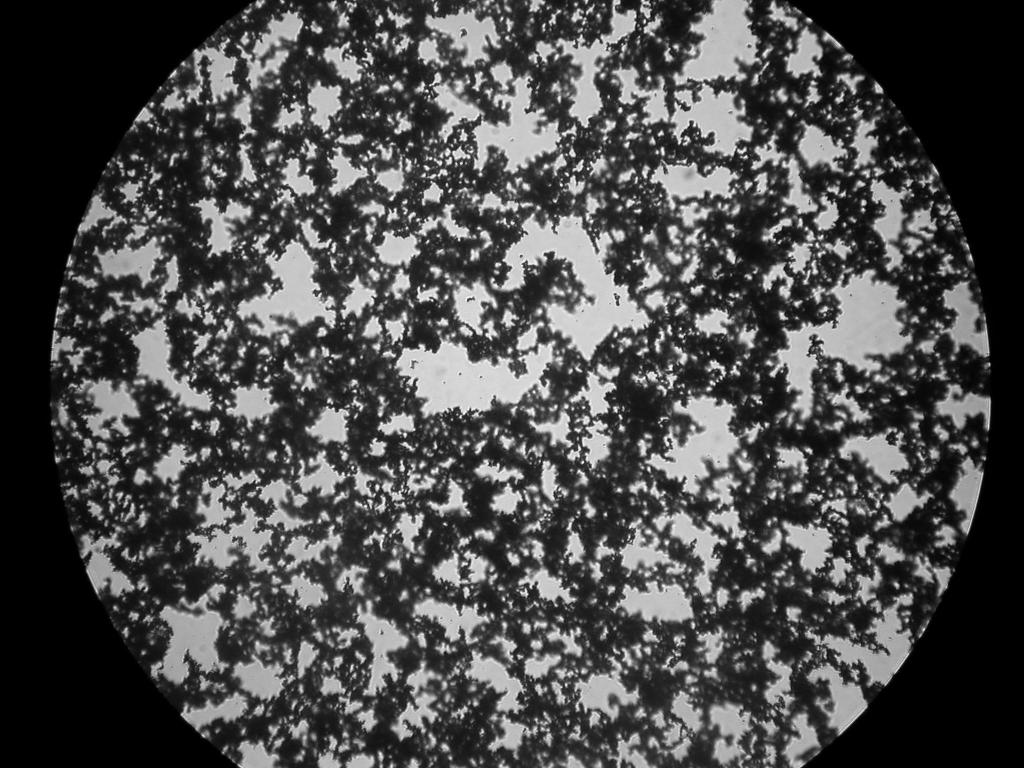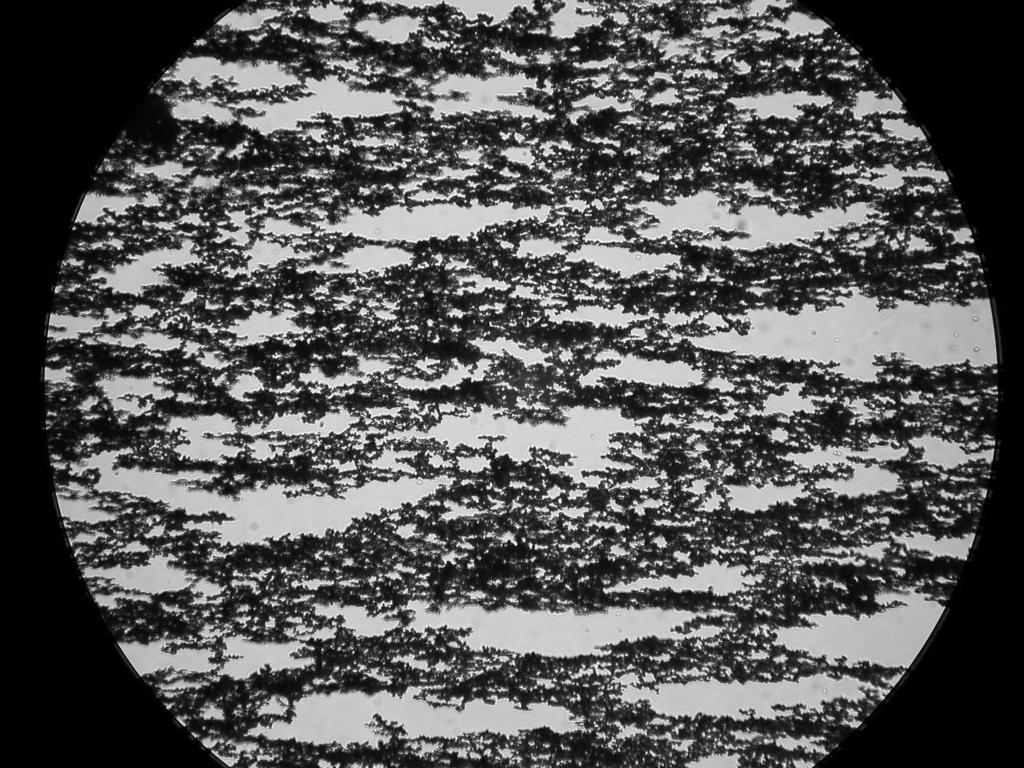Research - Colloids
Colloids in polymeric matrices
Suspensions of magnetic colloids in polymers:
Suspensions of magnetic particles have inspired scientists for a long time due to their fascinating properties and potential applications. If the particles are small enough, typically about 10 nm, Brownian motion is able to overcome the particle-particle interaction and gravity. In such a case a magnetic fluid (or ferrofluid) with strong magnetic properties can be obtained. Their hydrodynamic behavior is relatively well understood and they are used in a number of industrial applications (e.g., as sealing in computer hard drives). In contrast to magnetic fluids, magneto-rheological fluids are suspensions of larger (typically 1 μm) paramagnetic particles. The strong magnetic field dependence of the mechanical properties of these fluids lead to numerous applications (e.g., in adjustable shock absorbers). For possible applications strong mechanical effects with few magnetic particles are essential. For this reason we concentrate, in contrast to our previous study of mechanically isotropic systems, on systems with strong mechanical anisotropy and strong magneto-mechanical effects.
 |
 |
 |
We studied suspensions of magnetic particles, the precursor state of magnetic gels and elastomers. We used magnetic particles with a permanent magnetization which is high enough to overcome thermal energy and low enough to guarantee a long live time of the sample. These particles form a space-filling network at very low volume fractions (≈ 0.5 vol%), which modifies the viscoelastic response of the matrix significantly. In confined geometry the particles form clusters of a size that depends on the sample thickness. Even small external fields induce a strong anisotropy in the mechanical and optical properties of the suspension. The action of the applied magnetic field induces a gel like response in one direction but leaves the other directions liquid like. The viscosity is a very sensitive mechanical test for the anisotropy of the material (see Fig. 1). Light scattering data confirm our mechanical results.
References:
- Collin, D., Auernhammer, G. K., Gavat, O., Martinoty, P., Brand, H. R.;
Frozen-in magnetic order in uniaxial magnetic gels: preparation and physical properties;
Macromol. Rapid Comm. 24 (2003), 737 - 741. - G. K. Auernhammer, D. Collin, and P. Martinoty;
Viscoelasticity of suspensions of magnetic particles in a polymer: Effect of confinement and external field;
accepted for publication in J. Chem. Phys. (2006).
Financial support:
This project is supported by the European Commission through an Individual Marie Curie Fellowship.

